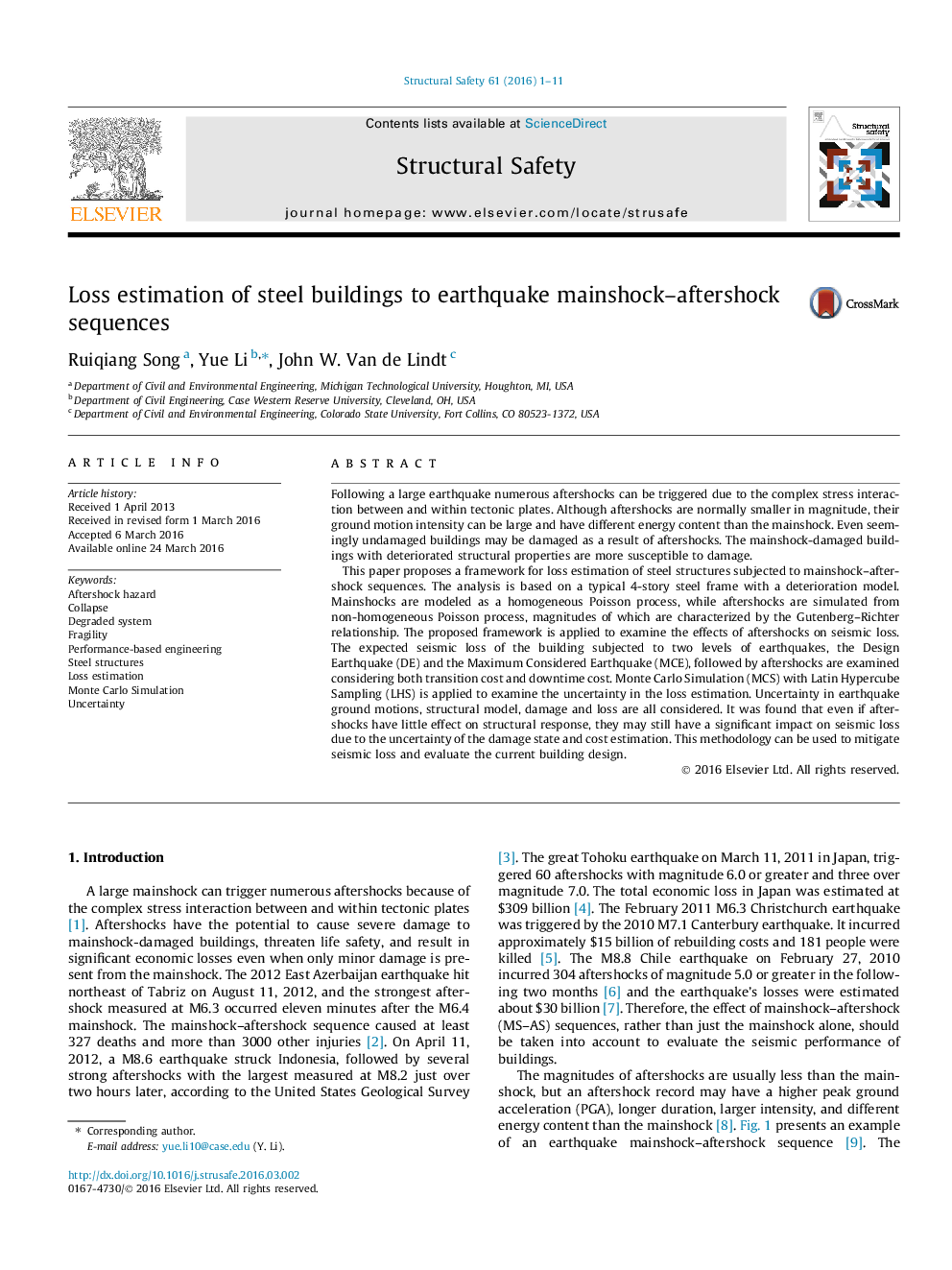| کد مقاله | کد نشریه | سال انتشار | مقاله انگلیسی | نسخه تمام متن |
|---|---|---|---|---|
| 307452 | 513363 | 2016 | 11 صفحه PDF | دانلود رایگان |
• We propose a framework for loss estimation considering mainshock–aftershock sequences.
• The uncertainty of the loss estimation is investigated by Monte Carlo Simulation with Latin Hypercube Sampling approach.
• The expected seismic loss considers the Design Earthquake and the Maximum Considered Earthquake, followed by aftershocks.
• Aftershocks have a significant impact on the seismic loss.
Following a large earthquake numerous aftershocks can be triggered due to the complex stress interaction between and within tectonic plates. Although aftershocks are normally smaller in magnitude, their ground motion intensity can be large and have different energy content than the mainshock. Even seemingly undamaged buildings may be damaged as a result of aftershocks. The mainshock-damaged buildings with deteriorated structural properties are more susceptible to damage.This paper proposes a framework for loss estimation of steel structures subjected to mainshock–aftershock sequences. The analysis is based on a typical 4-story steel frame with a deterioration model. Mainshocks are modeled as a homogeneous Poisson process, while aftershocks are simulated from non-homogeneous Poisson process, magnitudes of which are characterized by the Gutenberg–Richter relationship. The proposed framework is applied to examine the effects of aftershocks on seismic loss. The expected seismic loss of the building subjected to two levels of earthquakes, the Design Earthquake (DE) and the Maximum Considered Earthquake (MCE), followed by aftershocks are examined considering both transition cost and downtime cost. Monte Carlo Simulation (MCS) with Latin Hypercube Sampling (LHS) is applied to examine the uncertainty in the loss estimation. Uncertainty in earthquake ground motions, structural model, damage and loss are all considered. It was found that even if aftershocks have little effect on structural response, they may still have a significant impact on seismic loss due to the uncertainty of the damage state and cost estimation. This methodology can be used to mitigate seismic loss and evaluate the current building design.
Journal: Structural Safety - Volume 61, July 2016, Pages 1–11
